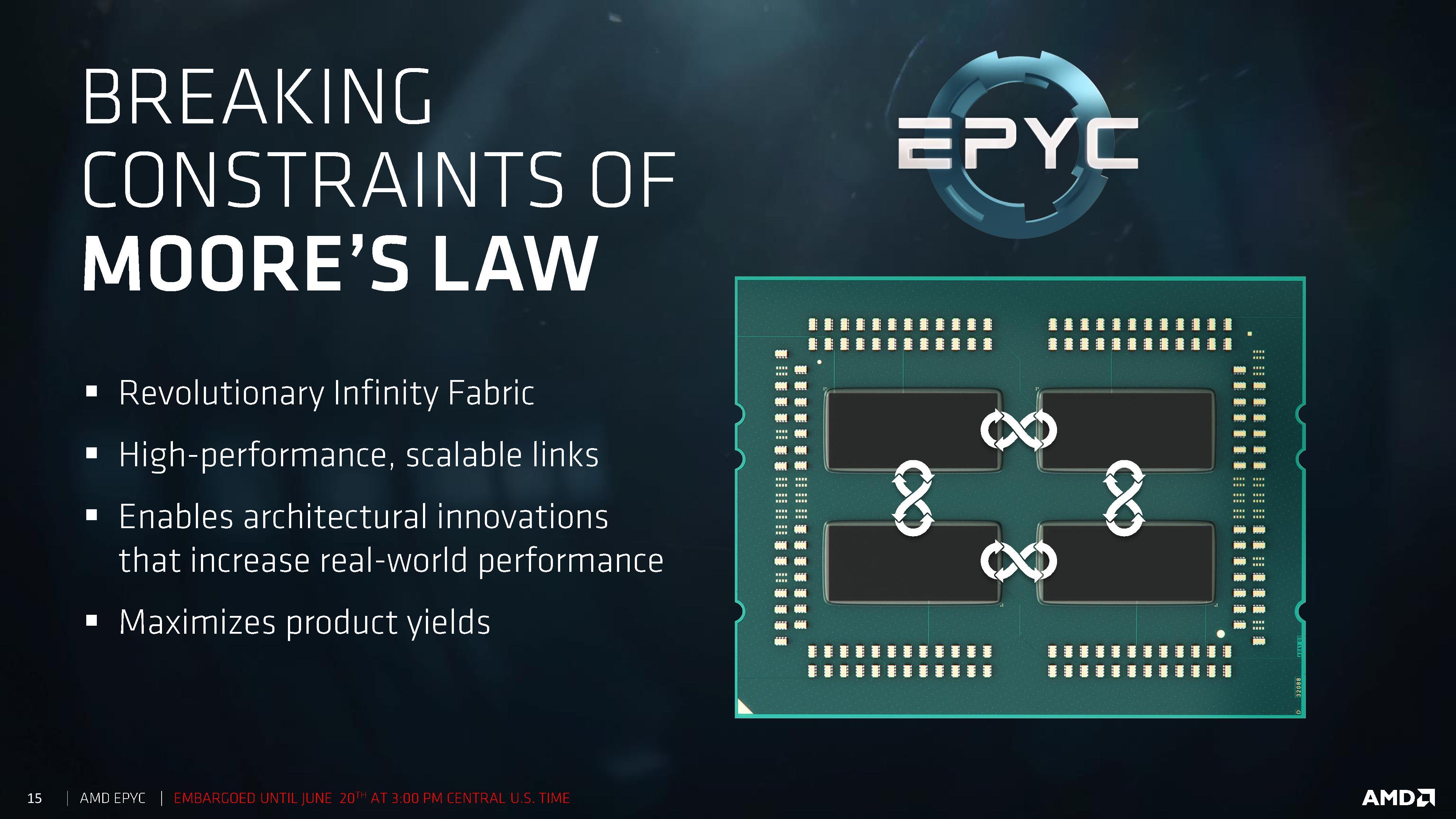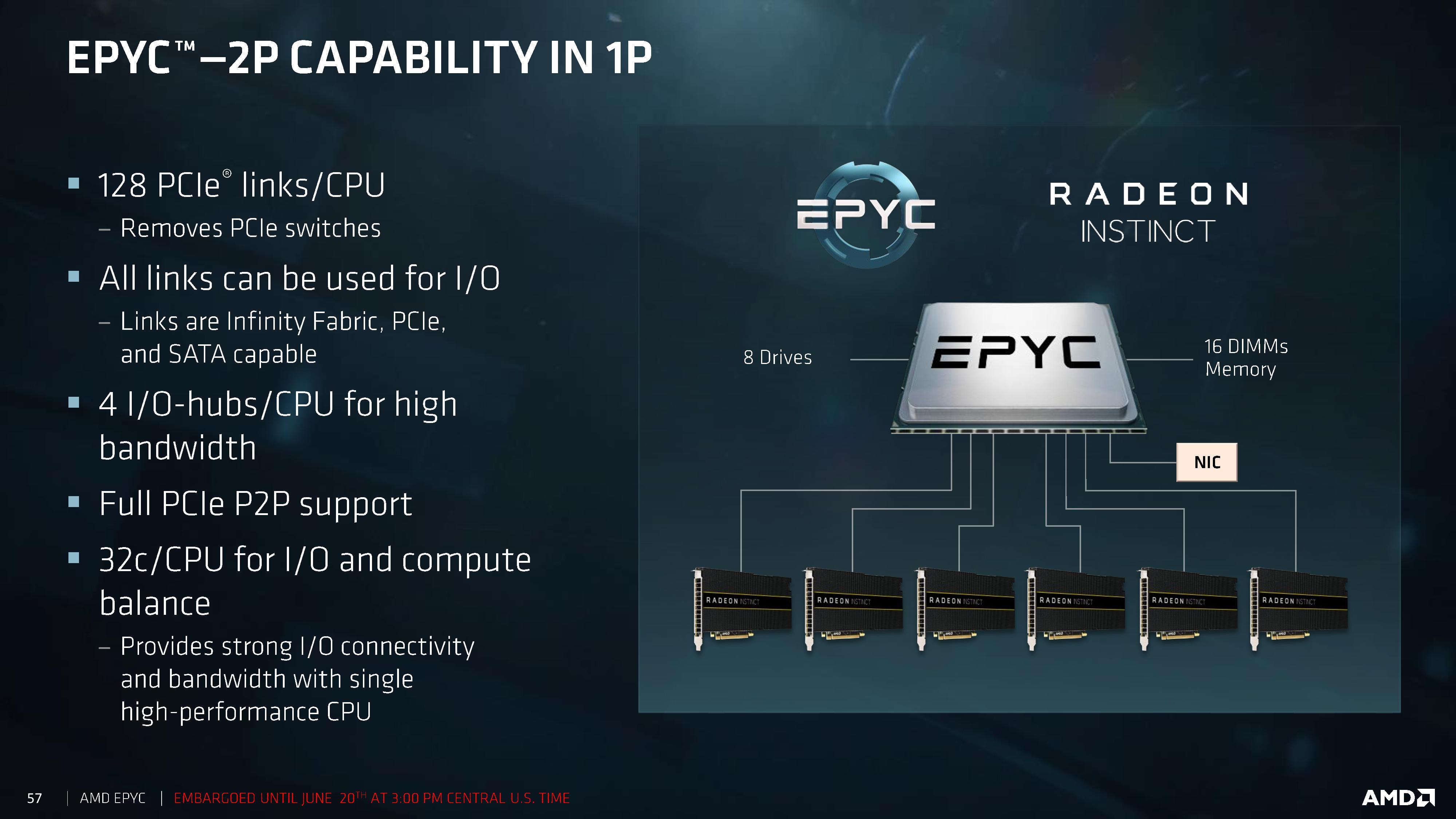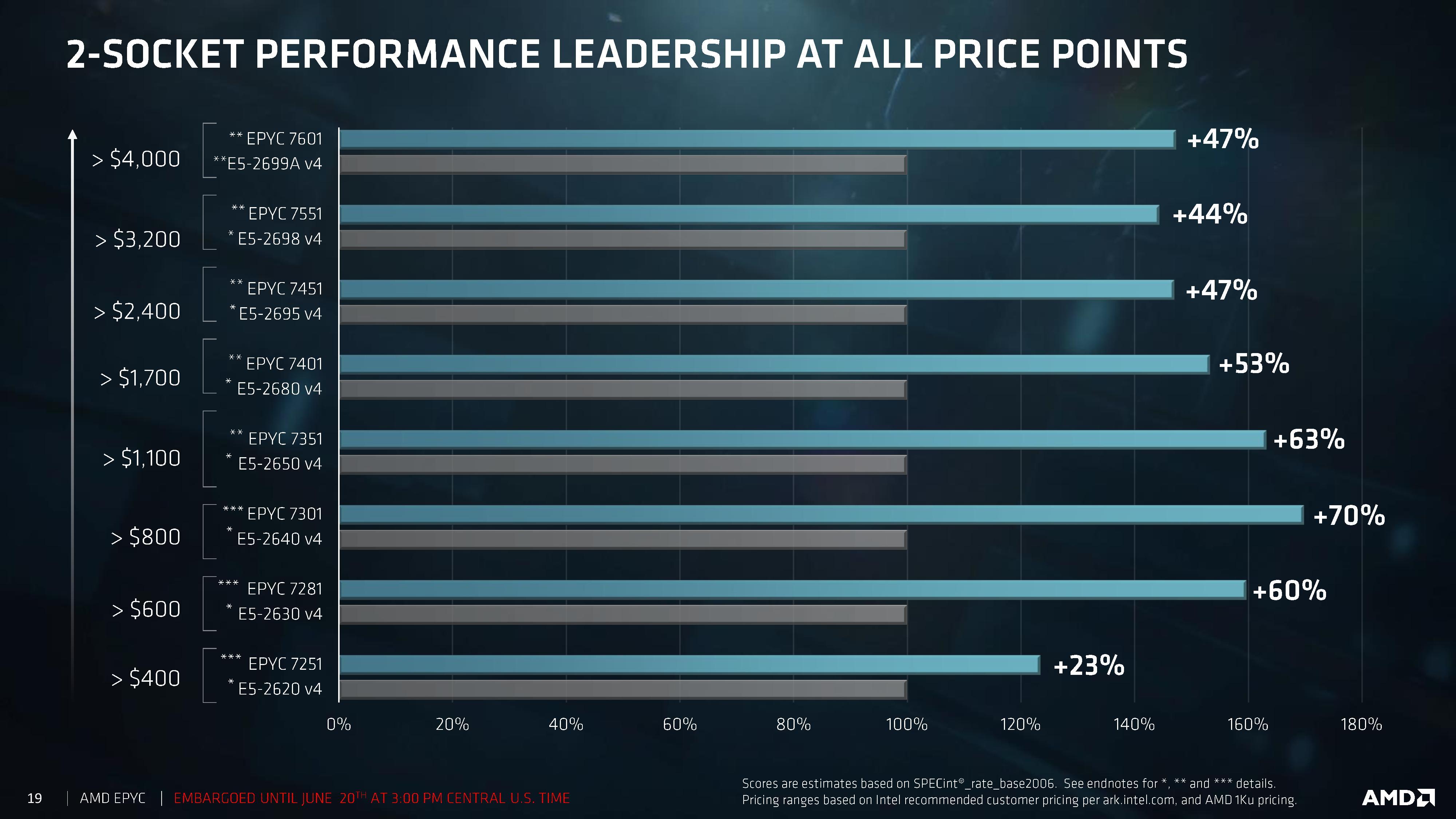AMD introduced the EPYC 7000 server processors

Server with EPYC 7000 processor
The big event for AMD was the release of Zen, the new powerful processor core for the new generation of processors. Then the important news was the release of the first Ryzen desktop processors, which are still causing a lot of discussion about their performance and competitiveness with Intel Core. But for the company AMD, perhaps, the most important is the current announcement, because the server processors are really able to give it a significant market share and bring greater profits. So, on June 20, 2017, AMD officially unveiled its line of EPYC 7000 server processors.
For a start, a list of processors with technical specifications. Here are nine processors for dual-processor configurations.
| Model | Cores / Threads | Base frequency | Maximum | Tdp |
|---|---|---|---|---|
| EPYC 7601 | 32/64 | 2.2 GHz | 3.2 GHz | 180 W |
| EPYC 7551 | 32/64 | 2.0 GHz | 3.0 GHz | 180 W |
| EPYC 7501 | 32/64 | 2.0 GHz | 3.0 GHz | 155/170 W |
| EPYC 7451 | 24/48 | 2.3 GHz | 3.2 GHz | 180 W |
| EPYC 7401 | 24/48 | 2.0 GHz | 3.0 GHz | 155/170 W |
| EPYC 7351 | 16/32 | 2.4 GHz | 2.9 GHz | 155/170 W |
| EPYC 7301 | 16/32 | 2.2 GHz | 2.7 GHz | 155/170 W |
| EPYC 7281 | 16/32 | 2.1 GHz | 2.7 GHz | 155/170 W |
| EPYC 7251 | 8/16 | 2.1 GHz | 2.9 GHz | 120 W |
- EPYC 7551P (32 cores / 64 threads, base frequency 2.0 GHz, maximum 3.0 GHz, 180 W, estimated cost over $ 2000)
- EPYC 7401P (24 cores / 48 threads, base frequency 2.0 GHz, maximum 3.0 GHz, 155-170 W, estimated cost over $ 1000)
- EPYC 7351P (16 cores / 32 threads, base frequency 2.4 GHz, maximum 2.9 GHz, 155-170 W, estimated cost over $ 700)
In all twelve CPU L3 cache is 64 MB, 8-Ch DDR4 2666 MT / s memory is supported , memory encryption functions are supported, work in SEM (Secure Encrypted Memory) and SEV (Secure Encrypted Virtualization) modes. Advanced mode SEV - AMD's bold attempt to develop encrypted virtual machines in the CPU, which will be protected from the operating system, other processors, whatever. Encryption is carried out on the fly, this is done by a special ARM Cortex coprocessor and AMD-developed firmware.
The cost of EPYC 7601 exceeds $ 4000, EPYC 7551 exceeds $ 3200. Not all processors are known at least indicative prices. For example, for EPYC 7501 the price is unknown. The cost drops with a decrease in processor class. EPYC 7451 - $ 2,400, EPYC 7401 - $ 1,700, EPYC 7351 - $ 1,100, EPYC 7301 - $ 800, EPYC 7281 - $ 600. The price of the cheapest EPYC 7251 is expected somewhere in the region of more than $ 400.
In the near future, sales of four top-end processors of the line will begin, the production of the rest will start at the end of July.
All the "stones" look about the same. Each contains four silicon crystals, familiar from the announcement of the Ryzen processors. In a 32-core processor, these are crystals with eight processor cores each. They connect to each other with the new interconnect Infinity Fabric, which AMD considers one of its main achievements. This is a universal bus that will connect not only the crystals, but also the processors, and will also work in the new AMD Vega graphics. It should be noted that such an architecture with four crystals is preserved for all CPUs, regardless of the number of cores. This explains the high power consumption even in weak processors.

AMD developed Infinity Fabric as a modular and scalable bus so that it supports large GPUs and CPUs that will appear in the future.
With 8 memory channels and two DIMM support per channel, AMD says that the maximum memory capacity per socket is 2 TB, which for a dual-processor server corresponds to 4 TB. Each CPU will support 128 PCIe 3.0 links, that is, you can install up to six video cards with it or up to 32 solid-state drives using the NVMe protocol. All PCIe lanes are suitable for any I / O operations, such as network ports, SATA drives, or Infinity Fabric connections to other processors (dual-processor configurations use 64 lines).

At the presentation, AMD provided benchmark results and stated that in terms of price and performance, it is becoming a leader in all market segments. For dual-processor systems, AMD claims an increase in performance of up to 70% in the segment of processors worth more than $ 800. In the remaining segments, the difference is from 23% to 63%.

Moreover, AMD said that in some market segments of a single EPYC processor, it would be enough to replace two Intel server processors. For example, one EPYC 7281 processor has 63% more performance in the SPECint test than the E5-2609v4 dual-processor system.

Of course, this data vendor, blindly trust that you should not, but the numbers inspire respect.
Experts suggest that in the future, AMD may release a simplified and cheaper versions of server processors. For example, a series of 5000 or 3000 with a smaller number of processor cores and at very affordable prices.
All Articles